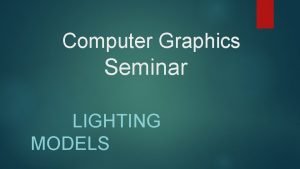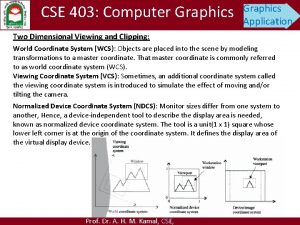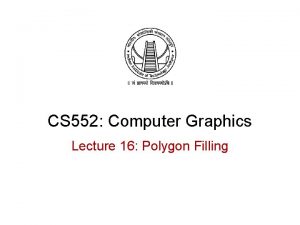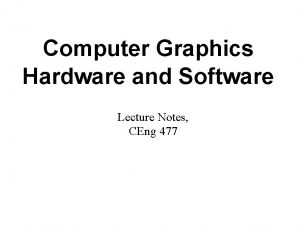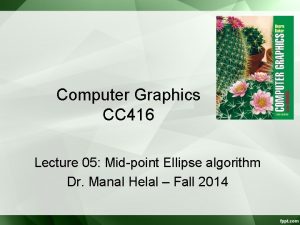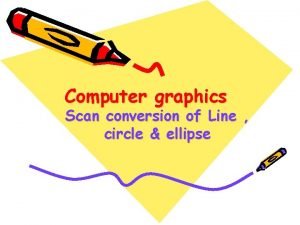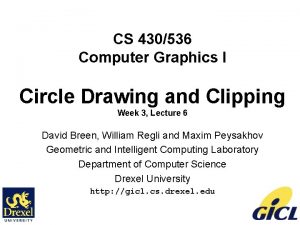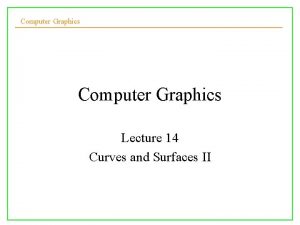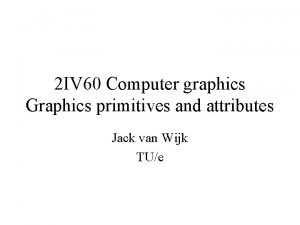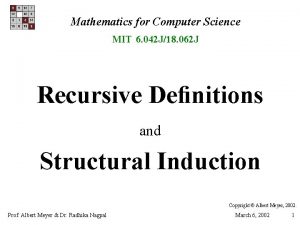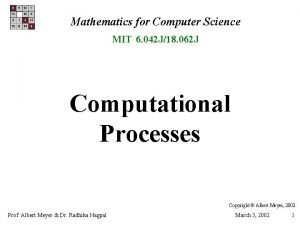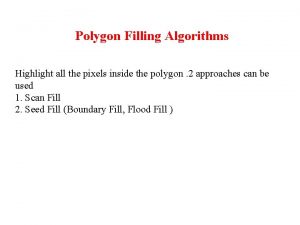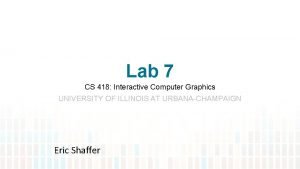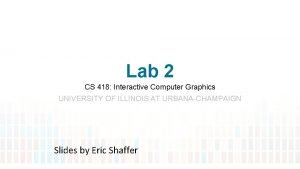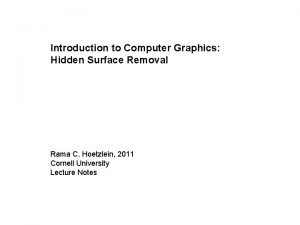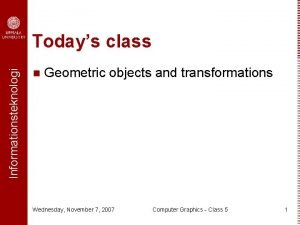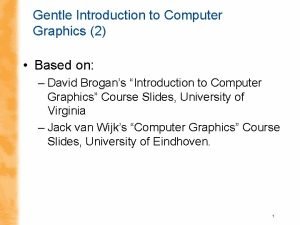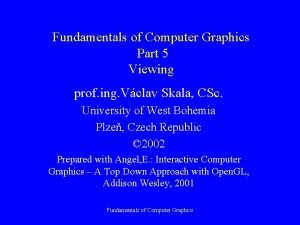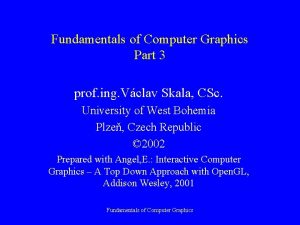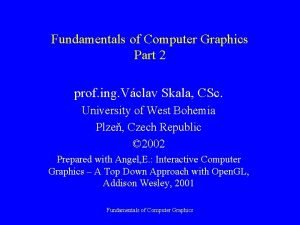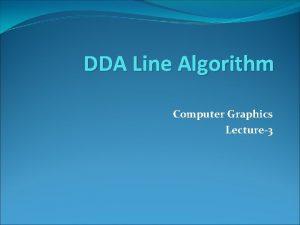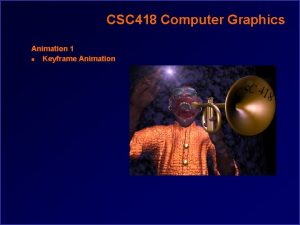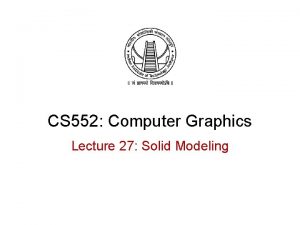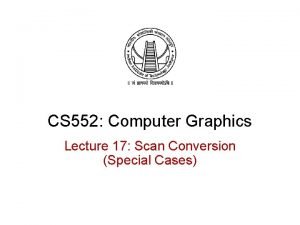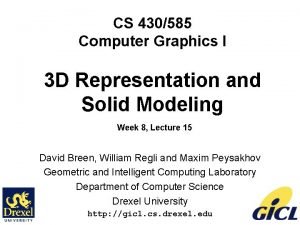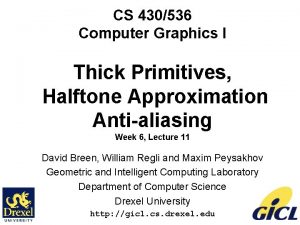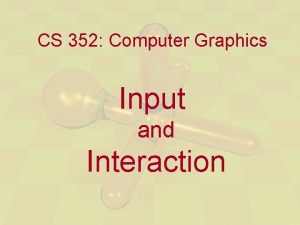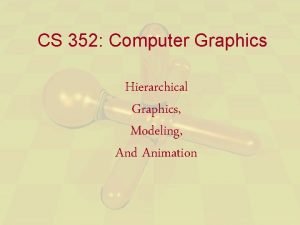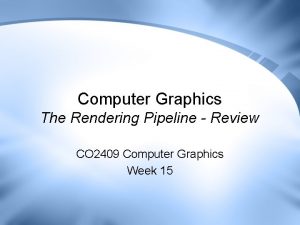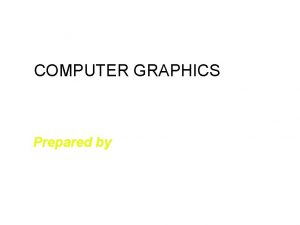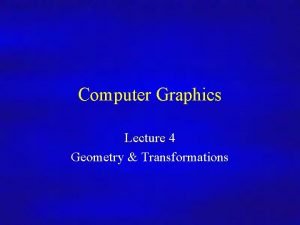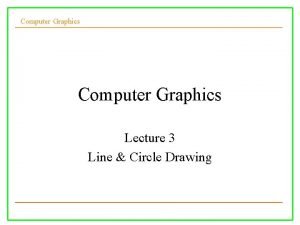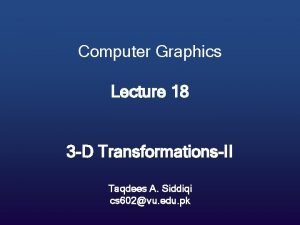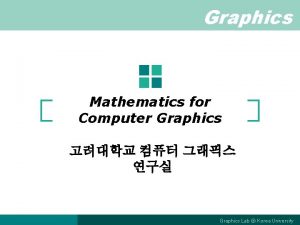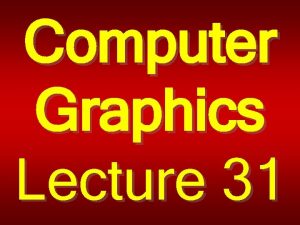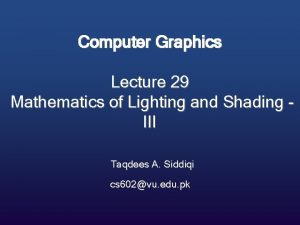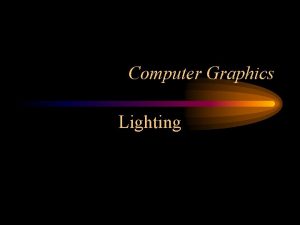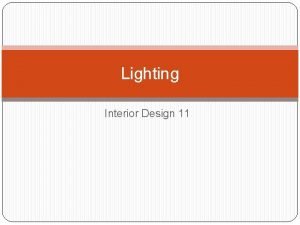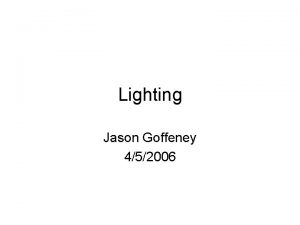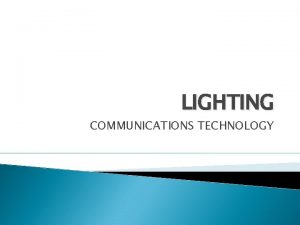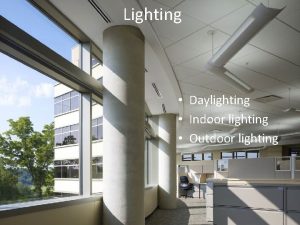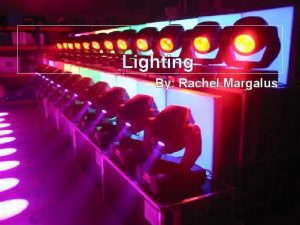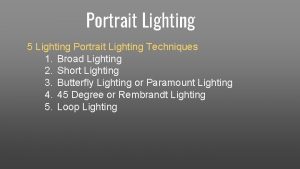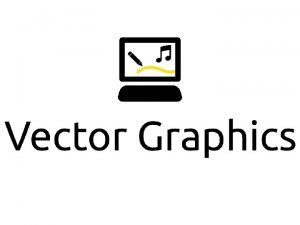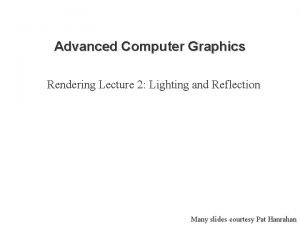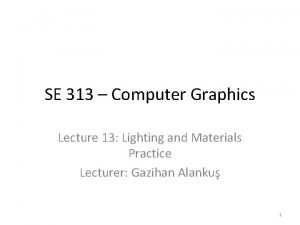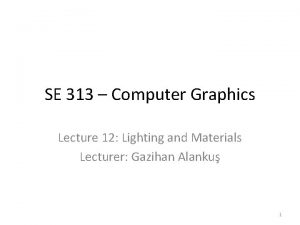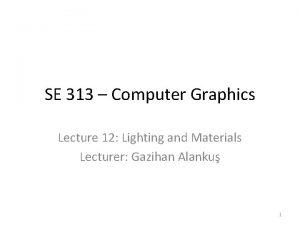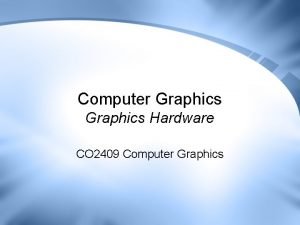Computer Graphics Lecture 26 Mathematics of Lighting and





























































- Slides: 61

Computer Graphics Lecture 26 Mathematics of Lighting and Shading Part II Taqdees A. Siddiqi CS 602@vu. edu. pk

Light Types and Shading Models

Light Types

Now that we have a way to find the light hitting a surface, we're going to need some lights!

There are three types of lights we are going to discuss

1) 2) 3) Parallel Lights (or Directional Lights) Point Lights Spotlights

Parallel Lights (or Directional Lights)

They represent light that comes from an infinitely far away light source.

All of the light rays that reach the object are parallel (hence the name).

The standard use of parallel lights is to simulate the sun. While it's not infinitely far away, 93 million miles is good enough!

The incoming light vector for calculation of the diffuse reflection factor is the same for all considered points,

whereas point lights and spotlights involve vector subtractions and a normalization per vertex.

Parallel light sources are the easiest and therefore fastest to process.

Point Lights

One step better than directional lights are point lights.

They represent infinitesimally small points that emit light.

Light scatters out equally in all directions.

we can have the intensity falloff based on the inverse squared distance from the light, which is how real lights work.


The light direction is different for each surface location (otherwise the point light would look just like a directional light). The equation for it is:


Figure 1: Point light sources

Spotlights

Spotlights are the most expensive type of light.

It is normally avoided to use because it is not for real time environment.

Spotlight is the type we would see in a theatrical production.

They are point lights, but light only leaves the point in a particular direction, spreading out based on the aperture of the light.

Spotlights have two angles associated with them. One is the internal cone whose angle is generally referred to as theta (θ).

Points within the internal cone receive all of the light of the spotlight; the attenuation is the same as it would be if point lights were used.

There is also an angle that defines the outer cone; the angle is referred to as phi.

Points outside the outer cone receive no light.

Points outside the inner cone but inside the outer cone receive light,

Figure 2: A spotlight

Open. GL and Direct. X Implements the lighting math behind the scene

Lighting is extremely expensive and can slow down our graphics application a great deal.

So we will have to figure out a line between performance and aesthetics.

Shading Models

Once we've found basic lighting information, we need to know how to draw the triangles with the supplied information. There are currently three ways to do this;

1) 2) 3) Lambertian Shading Gouraud Shading Phong Shading

Lambertian Shading

Triangles that use Lambertian shading are painted with one solid color instead of using a gradient.

Typically each triangle is lit using that triangle's normal. The resulting object looks very angular and sharp.

Lambertian shading was used mostly back when computers weren't fast enough to do Gouraud shading in real time.

To light a triangle, you compute the lighting equations using the triangle's normal and any of the three vertices of the triangle.

Figure 3: Flat shaded view of our polygon mesh

Gouraud Shading

Gouraud (pronounced garrow) shading is the current de facto shading standard in accelerated 3 D hardware.

Instead of specifying one color to use for the entire triangle, each vertex has its own separate color.

The color values are linearly interpolated across the triangle, creating a smooth transition between the vertex color values.

To calculate the lighting for a vertex, we use the position of the vertex and a vertex normal.

Figure 4: Gouraud shaded view of our polygon mesh

One problem with Gouraud shading is that the triangles' intensities can never be greater than the intensities at the edges.

So if there is a spotlight shining directly into the center of a large triangle, Gouraud shading will interpolate the intensities at the three dark corners, resulting in an incorrectly dark triangle.

Phong Shading

Phong shading is the most realistic shading model We are going to talk about, and also the most computationally expensive.

It tries to solve several problems that arise when we use Gouraud shading.

First of all, Gouraud shading uses a linear gradient. Many objects in real life have sharp highlights, such as the shiny spot on an apple.

The Phong does by interpolating the normal across the triangle face, not the color value, and the lighting equation is solved individually for each pixel.

Figure 5: Phong shaded view of a polygon mesh

Phong Shading is not technically supported in hardware but we can program and many other special effects, using shaders, a hot new technology.

Computer Graphics Lecture 26
 Lighting models in computer graphics
Lighting models in computer graphics Computer graphics
Computer graphics Graphics hardware in computer graphics ppt
Graphics hardware in computer graphics ppt 01:640:244 lecture notes - lecture 15: plat, idah, farad
01:640:244 lecture notes - lecture 15: plat, idah, farad Exterior clipping
Exterior clipping Line drawing algorithm computer graphics
Line drawing algorithm computer graphics Ppt on computer graphics
Ppt on computer graphics In two dimensional viewing system have
In two dimensional viewing system have Reflection and shearing in computer graphics
Reflection and shearing in computer graphics Mathematical foundations of computer graphics and vision
Mathematical foundations of computer graphics and vision Polygon clipping in computer graphics ppt
Polygon clipping in computer graphics ppt Boundary fill algorithm in computer graphics
Boundary fill algorithm in computer graphics Computer graphics hardware and software
Computer graphics hardware and software Ellipse drawing algorithm example
Ellipse drawing algorithm example Direct method of line drawing in computer graphics
Direct method of line drawing in computer graphics What is pixmap in computer graphics
What is pixmap in computer graphics Advantages and disadvantages of random scan display
Advantages and disadvantages of random scan display Circle in computer graphics
Circle in computer graphics Computer graphics
Computer graphics Aliasing and antialiasing in computer graphics
Aliasing and antialiasing in computer graphics Filled area primitives in computer graphics
Filled area primitives in computer graphics Mathematics for computer science mit
Mathematics for computer science mit Die hard
Die hard Mathematics for computer science mit
Mathematics for computer science mit Computer security 161 cryptocurrency lecture
Computer security 161 cryptocurrency lecture Computer aided drug design lecture notes
Computer aided drug design lecture notes Computer architecture lecture notes
Computer architecture lecture notes Isa vs microarchitecture
Isa vs microarchitecture Angel computer graphics
Angel computer graphics Define projection in computer graphics
Define projection in computer graphics Plasma display in computer graphics
Plasma display in computer graphics Shear transformation in computer graphics
Shear transformation in computer graphics Glsl sincos
Glsl sincos Scan conversion in computer graphics
Scan conversion in computer graphics Rigid body definition
Rigid body definition Flood fill algorithm are used to fill the
Flood fill algorithm are used to fill the Raster scan line in computer graphics
Raster scan line in computer graphics Polygon filling algorithm in computer graphics
Polygon filling algorithm in computer graphics Computer graphics
Computer graphics Cs 418
Cs 418 Glcreatebuffer
Glcreatebuffer Depth sorting method in computer graphics
Depth sorting method in computer graphics Achromatic light in computer graphics
Achromatic light in computer graphics Interactive input methods in computer graphics
Interactive input methods in computer graphics Uniform scaling in computer graphics
Uniform scaling in computer graphics Uniform scaling in computer graphics
Uniform scaling in computer graphics Orthogonal projection in computer graphics
Orthogonal projection in computer graphics Logical input devices in computer graphics
Logical input devices in computer graphics Fundamentals of computer graphics
Fundamentals of computer graphics Dda algorithm in computer graphics
Dda algorithm in computer graphics Csc418
Csc418 Solid
Solid Scan conversion in computer graphics
Scan conversion in computer graphics Boundary representation in computer graphics
Boundary representation in computer graphics Thick primitives in computer graphics
Thick primitives in computer graphics Interaction in computer graphics
Interaction in computer graphics Computer graphics
Computer graphics Computer graphics pipeline
Computer graphics pipeline Srgp in computer graphics
Srgp in computer graphics Types of transformation in computer graphics
Types of transformation in computer graphics Circle drawing algorithm in computer graphics
Circle drawing algorithm in computer graphics Uniform scaling in computer graphics
Uniform scaling in computer graphics
